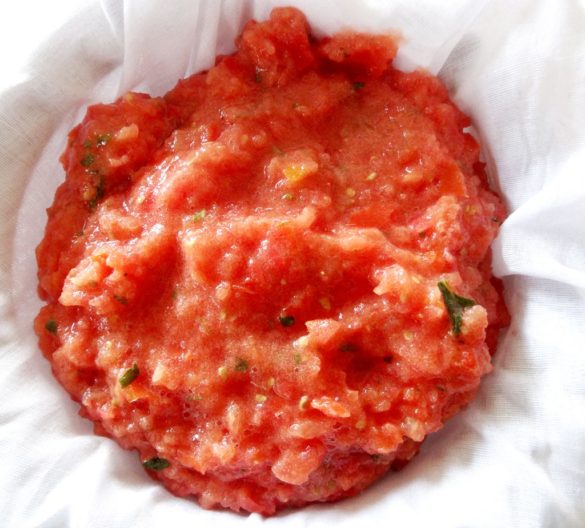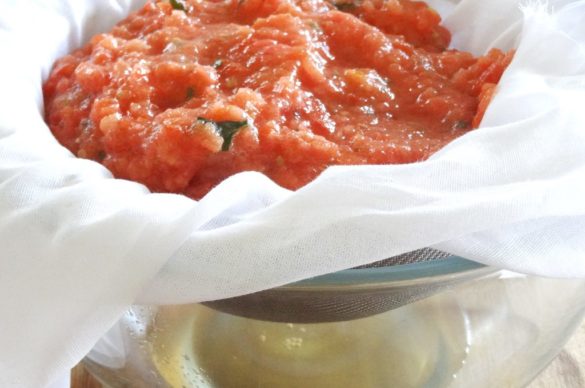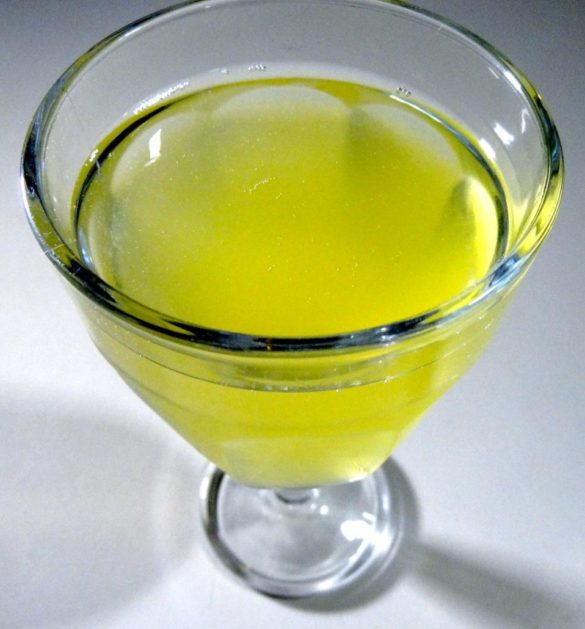Introduction:
This is seriously going to dazzle your taste buds. That little world-wide member of the nightshade supporters club, the multi-talented tomato makes an appearance as what most would see as a little understated and almost invisible. What we are going to do is blitz him (or her) to a pulp with a little herb and some salt and then leave him alone for a few hours in a cold place to deliver some seriously delicious juice. We’re going turn that bright red ripened fruit into a clear water-like liquid.
This will be the most rounded and balanced tomato flavour you will have had the chance to get those umami taste buds of yours around. Why?
Firstly, this ripe, sweet and tart fruit is considered by most to be a vegetable because of its savoury taste. Tomatoes have uniquely high levels of glutamic acid and sulphur compounds. These savoury chemicals are usually found in meat rather than fruit, and are the reason that tomatoes pair so well with meat dishes and add fantastic depth and complexity to sauces.
Secondly, a tomato, by anatomy, consists of a cuticle (the skin), the fruit wall, a semi-liquid jelly covering the seeds and the pith (the central part). The amino acids (such as glutamic acid) and sugars are mainly in the wall of the tomato. The acidity concentration is highest in the liquid jelly. The aroma compounds in a tomato are mainly in the cuticle and wall. When one removes the jelly, seeds, pith and cuticle of the tomato to cook, what’s remaining is a high concentration of sugar and savouriness. This unbalances the flavour of the tomato leading to a sweeter result that sacrifices the acidity (malic and citric acid) and aroma. The latest research from Reading University in England has indicated that there are also high levels of glutamic acid in the seeds, so by discarding those we are also losing some of the savouriness.
When tomatoes are cooked down to a sauce they gain some flavour notes, such as violet and lavender. This is as result of a breakdown of the carotenoid pigment (the pigment that gives tomatoes their red colour). However, cooking also removes some of those ‘green’ fresh notes – you know the smell you get from tomato leaf.
This here tomato water then keeps the integrity of that tomato intact – What we are doing is slowly extracting the savouriness (the glutamic acid), the sweetness and the acidity, and keeping that wonderful freshness. And slowly is the key. Give it a go; I promise that if you’re in to tomatoes then you’ll be amazed.






